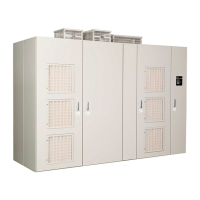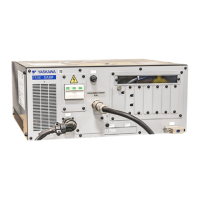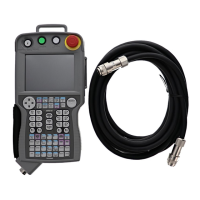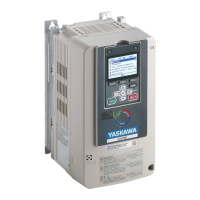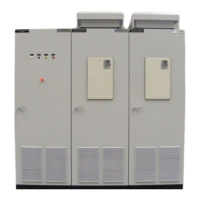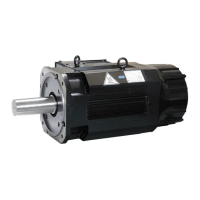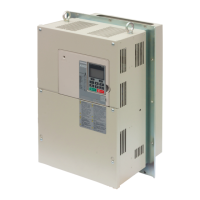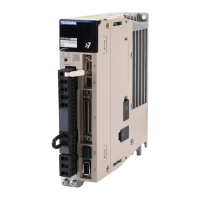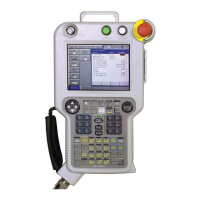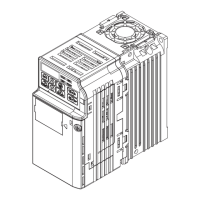110 YASKAWA ELECTRIC EZZ010928 FSDrive-MV1000 Instructions
5.2 Motor Performance Fine-Tuning
5.2 Motor Performance Fine-Tuning
This section offers helpful information for counteracting oscillation, hunting, or other problems that occur while
performing a trial run. Refer to the section below that corresponds to the motor control method used.
Note: This section describes parameters that are commonly edited and may be set incorrectly. Consult Yaskawa for more information
on detailed settings and fine-tuning the drive.
◆ Fine-Tuning V/f Control
Table 5.1 Parameters for Fine-Tuning Performance in V/f
◆ Fine-Tuning Open Loop Vector Control
Table 5.2 Parameters for Fine-Tuning Performance in OLV
Problem Parameter No. Corrective Action Default
Suggested
Setting
• Motor hunting and
oscillation at speeds
between 10 and 40 Hz
<1> Determined by o2-04 (Drive Model Selection)
Hunting Prevention
Gain Setting(n1-02)
• If insufficient motor torque relative to the size of the load
causes hunting, reduce the setting.
• When motor hunting and oscillation occur with a light
load, increase the setting.
• Lower this setting if hunting occurs when using a motor
with a larger frame size, or a motor with relatively low
inductance.
1.00 0.10 to 2.00
• Poor torque or speed
response
• Motor hunting and
oscillation
Torque
Compensation
Primary Delay Time
(C4-02)
• If motor torque and speed response are too slow, decrease
the setting.
• If motor hunting and oscillation occur, increase the setting.
200 ms
100 to 1000
ms
• Poor motor torque at
speeds below 10 Hz
• Motor hunting and
oscillation
Torque
Compensation Gain
(C4-01)
• If torque is insufficient at speeds below 10 Hz, increase the
setting.
• If motor hunting and oscillation with a relatively light
load, decrease the setting.
1.00 0.50 to 1.50
• Poor motor torque at low
speeds
• Motor instability at
motor start
Mid Output
Frequency Voltage
(E1-08)
Minimum Output
Frequency Voltage
(E1-10)
• If torque is insufficient at speeds below 10 Hz, increase the
setting.
• If the motor exhibits excessive instability at start-up,
reduce the setting.
E1-08:
<1>
E1-10: <1>
±3% of the
motor rated
voltage
• Poor speed precision
Slip Compensation
Gain
(C3-01)
• After setting the motor-rated current (E2-01), motor-rated
slip (E2-02), and motor no-load current (E2-03), adjust the
slip compensation gain (C3-01).
0.0 (no slip
compensation)
0.5 to 1.5
Problem Parameter No. Corrective Action Default
Suggested
Setting
• Poor motor torque and
speed response
• Motor hunting and
oscillation at speeds
between 10 and 40 Hz
Speed Feedback
Detection Control
(AFR) Gain(n2-01)
• If motor torque and speed response are too slow, gradually
decrease the setting by 0.05.
• If motor hunting and oscillation occur, gradually increase
the setting by 0.05.
1.00 0.50 to 2.00
• Poor motor torque and
speed response
• Motor hunting and
oscillation at speeds
between 10 and 40Hz
Speed Feedback
Detection Control
(AFR) Time Constant
1(n2-02)
• To improve motor torque speed response, gradually reduce
this setting by 10 ms and check the performance.
• If motor hunting and oscillation occur as a result of load
inertia, gradually increase the setting by 50 ms and check
the performance.
Note: Ensure that n2-02 ≤ n2-03.When
changing n2-02, set C4-02 (Torque
Compensation Primary Delay Time)
accordingly.
250 ms
50 to 2000
ms
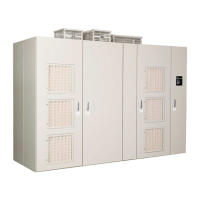
